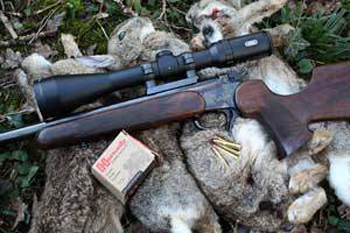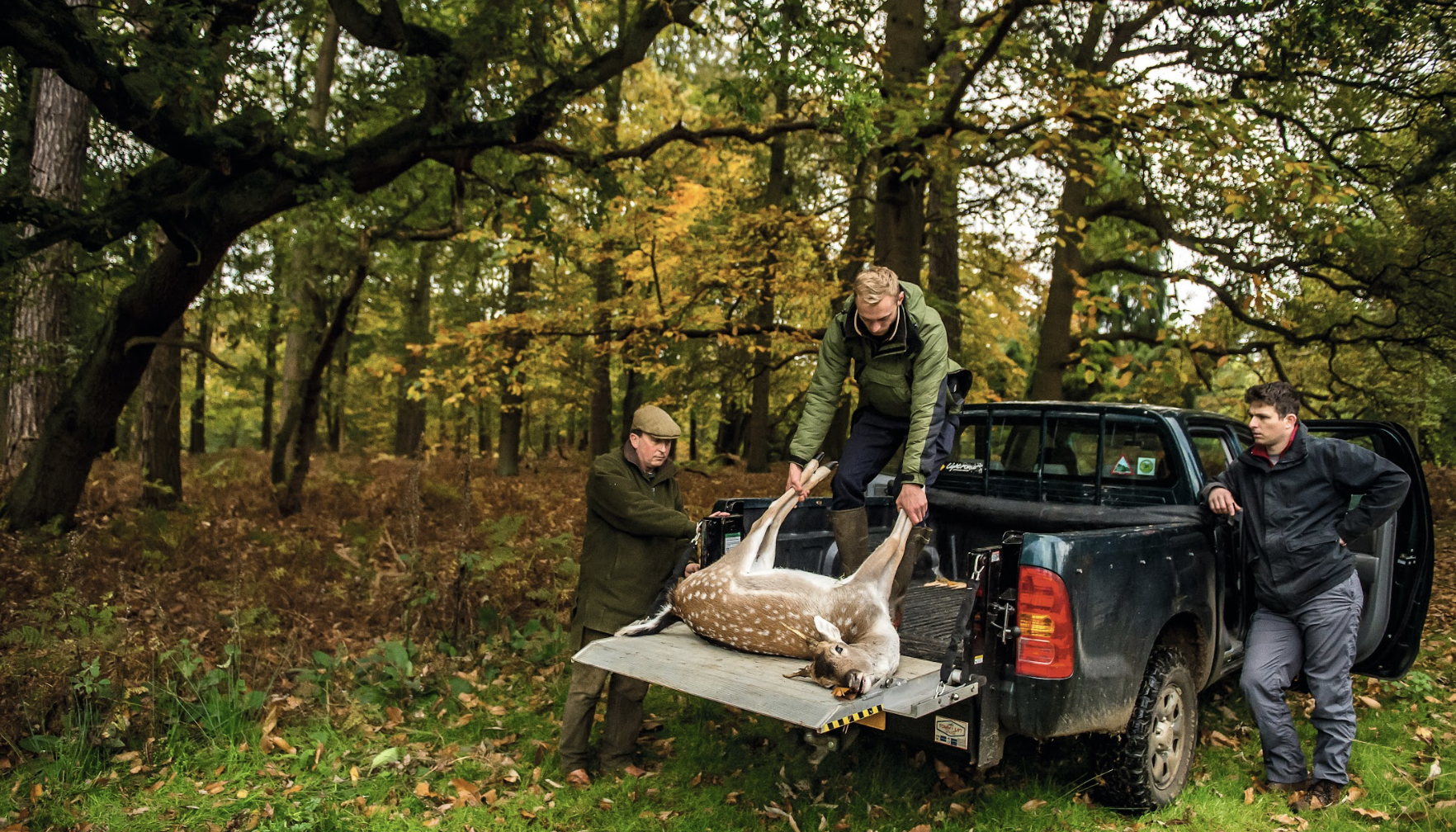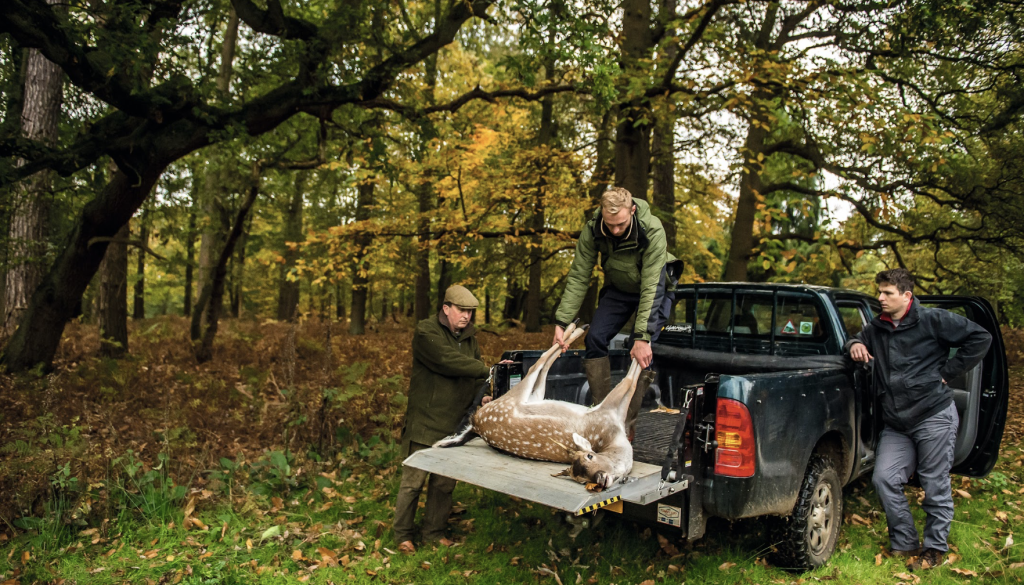News
.22 Hornet calibre review
Why is the .22 Hornet calibre so underrated for rifle shooting? It achieves great results and is economical both with powder charges and noise.
Would you like to speak to our readers? We offer sponsored articles and advertising to put you in front of our audience. Find out more.
.22 Hornet calibre review.
Some calibres come into vogue as the next big thing; others silently slip into obscurity, while there are some that simply refuse to retire, despite their age.
Probably one of the most underrated cartridges of all time, and one I personally use, is the .22 Hornet.
“Despite mild velocity figures and its long, tapered, outdated case design, the Hornet still bumbles along in sales terms.”
First chambered by Winchester in 1930, its lineage can be traced back to 1885, when the same case dimensions were charged with 13 grains of blackpowder and a 45-grain lead bullet head and called the .22 WCF (Winchester centrefire).
This gave some 1,600fps with a 45-grain bullet, while the inception of smokeless powder saw the Hornet rise to new ballistic heights, as the Germans wasted no time in converting to the new powder and named the round the 5.6x35R. This gave a raise from 1,600fps to 2,600fps with the same 45-grain bullet – some increase.
A useable little round, it was economical to shoot and reload, had little felt recoil and would not annoy your neighbours with its mild muzzle report.
Pigeonholing the Hornet was always the problem, it being above rimfire velocities, yet not as poky as most other .22 centrefires. As a rabbit gun, therefore, it had too much energy, while for anything larger you could be forgiven for passing up the Hornet in favour of the larger .222 Rem, as I did.
Shame on me, however, as when I actually analysed the areas I shoot, in Surrey especially, I found my shots at foxes or vermin were less than 100 yards – 50 yards was more common in the wooded glades.
“So why shoot a larger cartridge that burns more powder, kicks more and yells your presence to the neighbours?”
Why not have a .17HMR rimfire?
Well, at the same ranges the Hornet shoots a heavier bullet with more authority without going over the top, so humane, one-shot kills are far more predictable. More importantly to me, the Hornet is reloadable, enabling a variety of handloads to be utilised. The effective range, however, is approximately 175 yards to 200 yards – 250 yards is stretching things – so if game is encountered more often at these longer ranges, by all means go for the larger .22 centrefires.
“The Hornet fits into a tight niche as an effective short-range fox gun or vermin rifle that is relatively cheap and quiet.”
This is where the Hornet comes into its own: the velocity figures from the test gun showed the factory-loaded ammo ambling along, whereas a good handload really got the Hornet stinging. Because of its slow twist (the rifling is only 1:16) it is unable to stabilise heavier bullets well, such as the 55 or 60 grain. Stick to the 35, 40 and 45 grain bullets, as these give the best compromise between velocity and energy, combined with flattest trajectories.
At 100 yards zero, you are only 0.35in high at 50 yards, very useable at my ranges yet -5.8in low at 200 yards with Berger 45 grain bullets travelling at 2,600fps or so.
Down the reload road
The Hornady 35-grain V-Max bullets, reloaded or used as factory-loaded Varmint Extreme ammunition, offer the highest velocity and flattest trajectory for short range, as well as dependable and highly frangible results, where a ricochet would be undesirable.
The only drawback is the lighter, stubbier bullet has a lower ballistic coefficient and is affected by the wind at longer range. The 35-grain Hornady V-Max can be sent flying at 3,057fps, producing 726ft/lb energy with a paltry powder charge of 11 grains VIT N110 and spectacular downrange performance.
Typical reloads for the heavier bullets are H110 at 11 grains with 40 grain bullets to give 2,845fps, while the same powder at 10 grains for 45-grainers gives 2,623fps. H4227 is another good powder: at 10.5 grains for 40 grain bullets, it gives 2,653fps and 2,494fps with 10 grains for 45 grain bullets.
Factory fodder
There are still many good manufacturers of factory ammunition for the .22 Hornet, despite its age, of which Remington, RWS, Winchester, Sellier & Bellot and Hornady are readily available. All but the Remingtons were soft points or polymer-tipped and of a hollow-point design.
The Winchesters sped along at 2,501fps with a 45-grain bullet and generated a good 625ft/lb of energy, giving dependable one-shot kills. In the test rifle, however, a beautiful Ivan Hancock custom Contender, it shot only 1.75in groups. The Remington sporting a hollow-point 45 grain bullet shot an average of 2,347fps, giving 551ft/lb energy less than advertised but still good, consistent results, with even better accuracy of 0.75in groups from five shots.
The next loads, the RWS, however, produced a slow 2,128fps velocity reading and 463ft/lb energy, and gave superb accuracy for five shots at 0.65in once again. A nice, mild load that was very effective when sound moderated.
The S&B 45-grainers shot the slowest velocities, at 2,074fps and 430ft/lb, and gave adequate groups of 1.25in that’s less fps than a .22WMR Maxi Mag rimfire cartridge but the heavier Hornet 45 grain bullet gives better energy figures despite its slower velocity.
The real darling was the Hornady Varmint Extreme ammunition loaded with 35 grain V-Max bullets. These produced the highest velocities, of 2,974 fps and 688ft/lb energy, and also gave the best accuracy at 100 yards of 0.55, just as good as my reloads from Ivan’s rifle.
A right performance
Everything in ballistics is a trade-off. Fast velocities usually mean light bullets that shoot flatter and expand rapidly, but are wind-sensitive and lose their energy quicker, while slower, heavier bullets give good energy figures and are ballistically more efficient, yet have a curved trajectory, less violent expansion on target and are prone to ricochets. You have to decide what load suits your style of shooting and at what range you intend to engage your quarry.
Stables, farmyards and paddocks with small adjacent fields suggest faster, lighter bullets with hollow-point construction would be much safer than a slower, less fragile bullet. In this instance I chose the Hornady 35 grain bullets, as they were accurate, gave a good velocity figure of 2,974fps and had enough knockdown clout with that fast, expanding bullet to despatch any fox up to 150 yards in a safe and controlled way.
Field test
One farm in the Surrey hills seems to have its fair share of fox troubles, but because of the ever-present M25, outlying buildings, cattle and horses, the Hornet proved a reassuringly safe round to shoot. An isolated barn backs on to a small copse and nestles into the side of two fields that foxes traverse, either mousing, rabbiting or on their way to the farm owners’ ornamental gardens and chicken runs.
With a vantage point from the straw in the barn, the ranges were short, out to 75 yards, with 100-yard shots across the field only available where there was a suitable backstop. Zeroed at 100 yards, I knew that my mid-range trajectory would only be 0.35in with the Hornady 35 grain ammunition – so dead-on, basically. I either sit and wait or encourage a little activity with a variety of calls, the best of which, in my view, are the OLT reed-blown type or Fox Pro electronic remote unit.
Using a Fox Pro I harvested two half-grown foxes instantly. There was very little muzzle report from the PES moderator and no lights from nearby houses went on. The Hornet is as at home controlling rabbits as it is vermin, allowing a confident ranged shot to be taken.
Conclusion
In all, the humble little Hornet still has a place in the British shooting scene and achieves great results, quietly and effectively with small powder charges.
I was so impressed with the Hornet round I had a .17 calibre version (17 Ackley Hornet) built, which is proving to be even better, but that will be another story?
Read a review of the .17 Remington cartridge
Read a review of the .223 Remington cartridge
Read a review of the .338 BR calibre
Read a review of the .260 cartridge
Read a review of the .22-250 calibre
Related articles
Manage Consent
To provide the best experiences, we use technologies like cookies to store and/or access device information. Consenting to these technologies will allow us to process data such as browsing behavior or unique IDs on this site. Not consenting or withdrawing consent, may adversely affect certain features and functions.
Functional Always active
The technical storage or access is strictly necessary for the legitimate purpose of enabling the use of a specific service explicitly requested by the subscriber or user, or for the sole purpose of carrying out the transmission of a communication over an electronic communications network.
Preferences
The technical storage or access is necessary for the legitimate purpose of storing preferences that are not requested by the subscriber or user.
Statistics
The technical storage or access that is used exclusively for statistical purposes.
The technical storage or access that is used exclusively for anonymous statistical purposes. Without a subpoena, voluntary compliance on the part of your Internet Service Provider, or additional records from a third party, information stored or retrieved for this purpose alone cannot usually be used to identify you.
Marketing
The technical storage or access is required to create user profiles to send advertising, or to track the user on a website or across several websites for similar marketing purposes.





